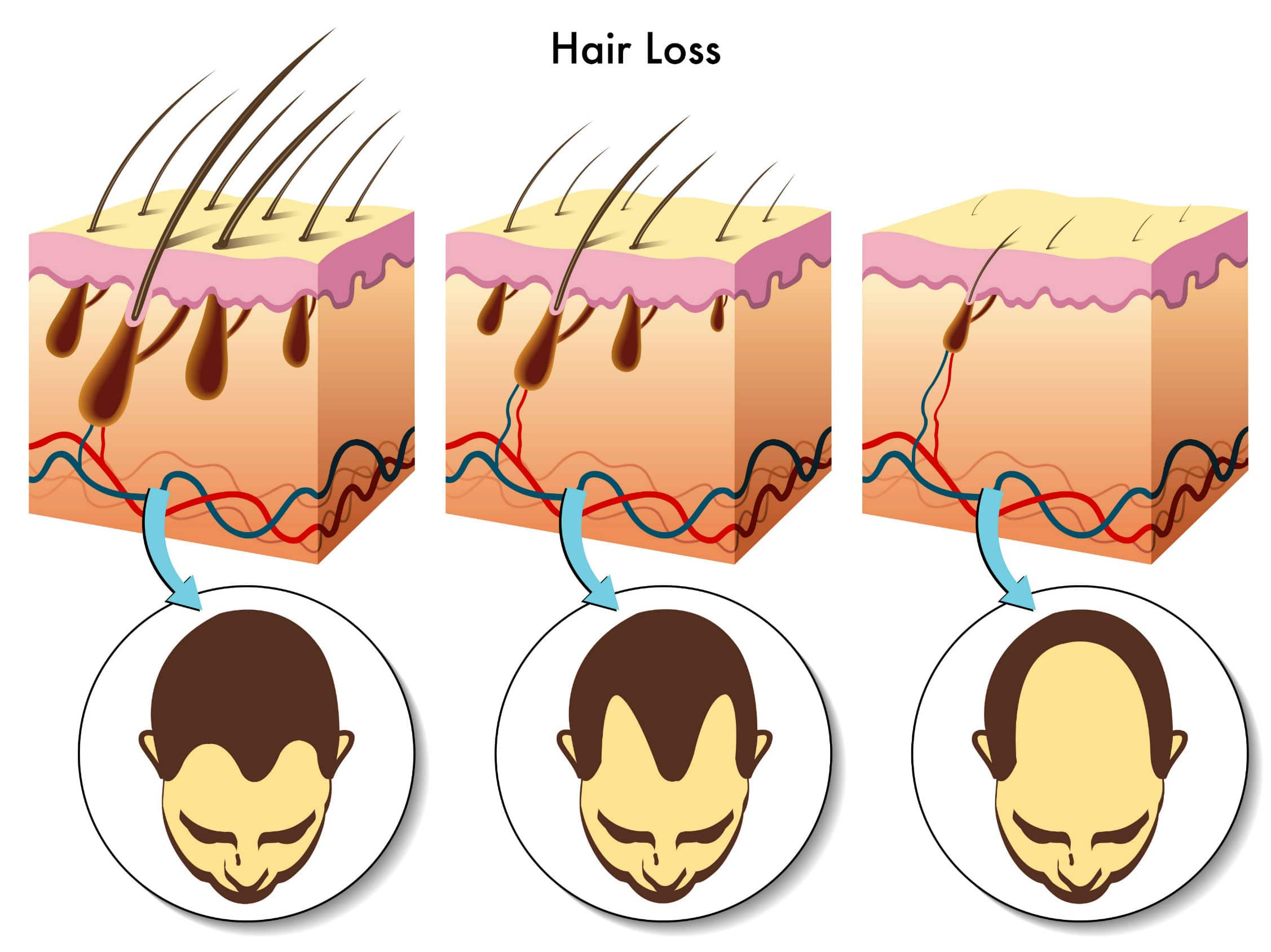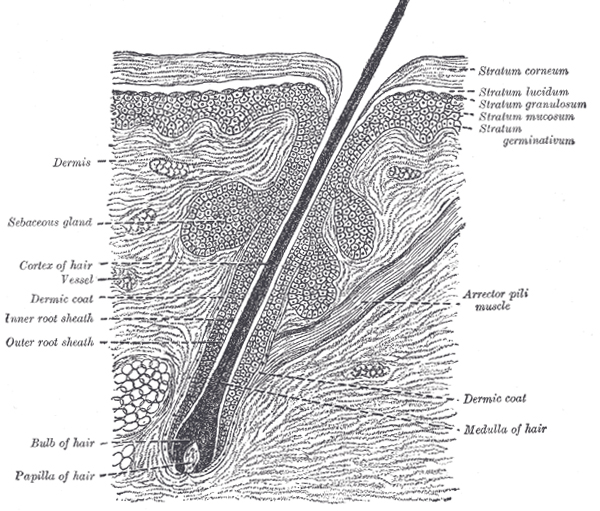Table Of Content

These hairs are like roommates, sharing the same living space (the follicle). But unlike most roommates, these hairs are actually connected at the base, forming a single hair shaft as they emerge from the follicle. It's a condition where multiple hair shafts, or pili, emerge from a single hair follicle. Picture it like a tree with multiple branches sprouting from the same trunk. Dr. Maqbool explained that hair follicles are responsible for the growth and maintenance of hair, starting from the several papillae, or tiny ridges, that supply them with blood vessels. "Each follicle contains a small tube of tissue that begins at the dermal papilla and extends down into the skin," he said.
Why Do I Have Two Hairs Growing from the Same Follicle?'
Embracing natural hair growth patterns and celebrating uniqueness can foster a positive body image and a healthier relationship with our bodies. While the two hairs one follicle phenomenon may present its own challenges, there are ways to manage and embrace it. We will provide helpful tips for effective hair removal techniques in the pubic area, along with professional advice from dermatologists and estheticians. Additionally, we will discuss the importance of embracing natural hair growth patterns and body positivity.
Bioprinting of hair follicle germs for hair regenerative medicine - ScienceDirect.com
Bioprinting of hair follicle germs for hair regenerative medicine.
Posted: Sat, 15 Jul 2023 07:00:00 GMT [source]
Here's Why You Can Have Multiple Hairs in One Follicle
To comprehend the phenomenon of “two hairs one follicle” in this specific region, it’s imperative to have a comprehensive understanding of how hair grows and the role of follicles. In conclusion, the two hairs one follicle phenomenon in the pubic area is a fascinating and often misunderstood aspect of human biology. By understanding the intricacies of hair growth and follicles, we can better appreciate the uniqueness of our bodies. Rather than viewing this phenomenon as a challenge, we encourage our readers to embrace their individuality and celebrate their own distinct features. Let’s continue the conversation and celebrate the dual delights of this captivating phenomenon.
What is a hair follicle?
The exact mechanisms behind the development of multiple hair bundles in one follicle are not fully understood. However, it is believed to be influenced by a combination of genetic factors, hormonal imbalances, and environmental triggers. Some individuals may have a genetic predisposition that affects the clustering of hair strands, while hormonal imbalances can disrupt the normal growth pattern. Environmental factors, such as inflammation or trauma to the hair follicles, may also contribute to the formation of multiple hair bundles. Understanding the basics of multiple hairs in one follicle is essential to explore the intricacies of this phenomenon.
Dermoscopic evaluation showed that hair follicles contained several short hair shafts with different lengths [Figure 1b]. Histological examination revealed that the follicular structures consisted of different hair shafts, which were enclosed in a common outer root sheath [Figure 2]. Managing and treating multiple hairs in one follicle requires a comprehensive approach. Diagnosis and evaluation by a healthcare professional are crucial to understand the specific characteristics and underlying causes of the condition. Treatment options may include topical solutions, laser and light therapies, surgical interventions, and complementary approaches. Prevention strategies and maintenance tips, such as maintaining a healthy hair care routine and promoting scalp health, can also contribute to managing this condition.
Does pili multigemini cause any health concerns?
If you see multiple hairs in one follicle somewhere on your body where it's undesirable, there is a way to safely remove them. "Pili multigemini can be completely removed with electrolysis," Dr. Chacon said. "It has been proposed that symptomatic pili multigemini can be improved with depilatory laser therapy." Pili multigemini is defined as the presence of two or more hair shafts in one hair follicle. It has mostly been reported to occur in the beard of men; however, it has been reported to occur uncommonly at other locations of the body as well.
What are the treatment options for pili multigemini?
We have explored the fundamentals of hair follicles and the science behind multiple hairs in one follicle, delving into the hair growth cycle and the concept of follicular units. We have discussed the various types of multiple hairs, including double hairs, triple hairs, and multiple hair bundles in one follicle, and examined their causes and variations. Additionally, we have explored the impact of multiple hairs in one follicle on hair growth, appearance, scalp health, and psychological well-being. Seeking professional advice from dermatologists or estheticians can provide personalized guidance and recommendations for individual needs.
Dealing with Two/Multiple Hairs in One Follicle(Pili Multigemini)
While the two hairs one follicle phenomenon in the pubic area may present unique challenges, there are ways to effectively manage and embrace this aspect of one’s hair growth. In this section, we will provide practical tips, professional advice, and insights to help individuals navigate the presence of two hairs growing from a single follicle. Hair follicles produce a new hair strand during the anagen phase of the hair growth cycle, and this is where multiple hairs can pop up.
In conclusion, we present an extensive case of pili multigemini over the back. This condition has been described previously as the nevoid pili multigemini. Despite the rarity of this entity, probably it could be a commonly recognizable condition with an exhaustive exploration.
This disorder is relatively frequent on the beard of adult men and on the scalp of children. However, extensive areas of pili multigemini in other locations have rarely been described. Hair removal procedures, such as laser hair removal, can help manage pili multigemini by reducing the number of hairs in each follicle.
Treatment options for double hairs in one follicle depend on the underlying cause and the individual’s preferences. Some individuals may choose to embrace the unique appearance of double hairs, while others may opt for cosmetic solutions. Various techniques, such as plucking, threading, or laser hair removal, can be used to manage the growth of double hairs and achieve the desired aesthetic outcome. Consulting with a dermatologist or a hair specialist can provide valuable guidance and personalized recommendations for managing double hairs in one follicle. A hair follicle consists of two main layers, an inner (epithelial) root sheath and an outer (fibrous) root sheath. At the base of the hair follicle is the hair bulb, which houses the dermal papillae and hair matrix cells.

Laser hair removal results in a permanent reduction in hair growth, so eventual hair regrowth is not very likely when it’s performed correctly. Anagen is the color phase of hair follicles.[6] The color of your hair will start to fade because the cell only last a couple months. Also attached to the follicle is a tiny bundle of muscle fiber, called the arrector pili, which is responsible for causing the follicle lissis to become more upright the surface of the skin. The muscle area can also cause the follicle to stick up slightly above the nearby skin (piloerection) with a pore incased with skin oil. Stem cells are at the junction of the arrector and the follicle, and are principally responsible for the ongoing hair production during a process known as the Anagen stage. A typical “crown” on your head is simply your hair follicles in a circular pattern, all following one direction.
No comments:
Post a Comment